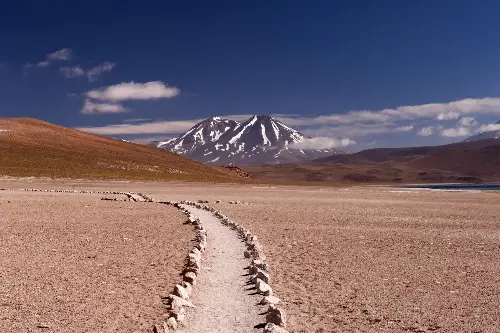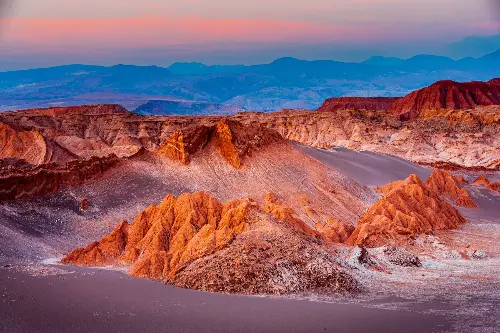Tucked between the wild peaks of the Andes and the rolling waves of the Pacific Ocean, Chile’s Atacama Desert has long captivated explorers, scientists and lovers of natural wonders alike. Stretching for more than 1,000 kilometres, the Atacama is celebrated not only for its stunning landscapes, but also for its remarkable status as the driest non-polar desert on Earth. Rich in mysteries and awash with beauty, the Atacama tells a story of survival, adaptation, and awe-inspiring scenery at the edge of the possible.

THE DRIEST PLACE ON THE PLANET
While many deserts compete for the title of ‘the driest’, Atacama wears its crown with scientific justification. Certain weather stations within the desert have never recorded rain. In fact, some areas receive as little as one millimetre of rain per decade, making water one of the most precious resources for any life daring enough to call this place home.
This extreme dryness is a result of the combined effects of the Andes to the east—blocking moist air from the Amazon basin—and the Chilean coastal range to the west, which shields the area from the Pacific’s humidity. The cold Humboldt Current off the coast also chills the air, reducing the possibility of cloud formation and precipitation.
A LANDSCAPE OF OUTLANDISH BEAUTY
Forget endless stretches of blank sand – the Atacama surprises with a palette of rugged canyons, jagged salt flats, dormant volcanoes, and vast basalt plains. The Valle de la Luna—Moon Valley—earns its name for resembling the surface of another planet, while Atacama’s salar, or salt flats, dazzle with crystalline crusts that glint under the unblinking desert sun.
The varied terrain encourages exploration, with each twist in the path revealing unique natural sculptures and geological wonders. At twilight, the land is bathed in hues of violet, pink, and orange. Stargazers flock to the Atacama, which boasts the clearest night skies in the world – a consequence of its rare air and isolation from light pollution. Astronomers travel here from across the globe to peer deeper into space than almost anywhere else on Earth.

SURVIVAL AGAINST THE ODDS
Despite its parched nature, the Atacama is teeming with life that has adapted to extremes. Desert foxes skirt the outskirts of salt flats, while colonies of flamingos can be found in high-altitude lagoons rich with minerals. Certain cacti species thrive here, with some boasting root systems that extract moisture straight from the morning fog, known locally as camanchaca.
Perhaps most fascinating of all is the presence of microbial life in Atacama’s soil. These robust microorganisms have sparked curiosity amongst astrobiologists, as they mirror the kind of life that might exist on Mars. NASA, in fact, regularly uses the Atacama landscape to test Mars-bound rovers and study survival strategies for life beyond Earth.
A CULTURE ROOTED IN THE DESERT
Long before the Atacama’s stark beauty began to draw international attention, it was home to indigenous peoples who left their mark on the land. The Atacameños developed ingenious ways to irrigate crops, harness resources, and thrive where little else would endure. Petroglyphs, ancient pathways, and pre-Columbian ruins tell stories of trade, ceremony, and daily life over thousands of years.
Modern-day San Pedro de Atacama, the region’s most popular gateway, buzzes with a blend of local traditions and global tourism. Here, old adobe churches stand alongside lively markets, and visitors are invited to join in age-old festivals still celebrated by the Atacameños’ descendants.

SCIENCE, MYSTERY, AND THE FUTURE
Beyond its dramatic panorama, the Atacama continues to offer surprises for scientists. Fossils of ancient marine creatures lie buried beneath salt-encrusted soil, hinting at a time when the region was submerged beneath ocean waters. Unusual geological formations fuel research into Earth’s climatic past, while the unique sky continues to be mapped by sprawling astronomical facilities like ALMA, one of the world’s most advanced telescopes.
The Atacama Desert is also central to global conversations about sustainability and resource management. Its vast mineral deposits, including lithium that powers our modern batteries, place it at the heart of debates over technology, environment, and local livelihoods.
Despite its harsh reputation, the Atacama Desert reveals a world vibrant with possibility, resilience, and wonder. From its celestial vistas to its biological marvels, every journey into the Atacama is an education in nature’s incredible diversity and the endless capacity of the planet to surprise and inspire.
